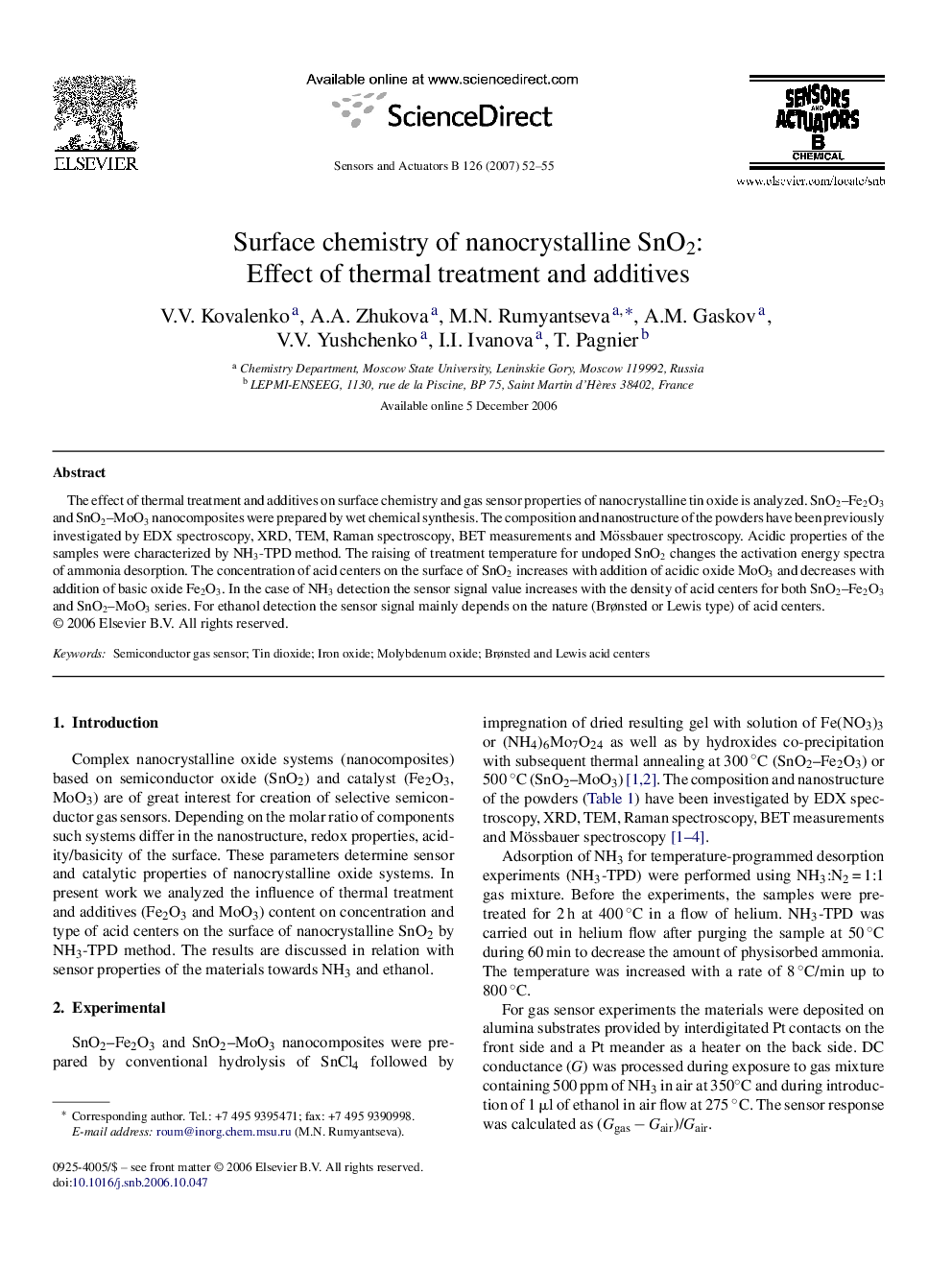| Article ID | Journal | Published Year | Pages | File Type |
|---|---|---|---|---|
| 751592 | Sensors and Actuators B: Chemical | 2007 | 4 Pages |
The effect of thermal treatment and additives on surface chemistry and gas sensor properties of nanocrystalline tin oxide is analyzed. SnO2–Fe2O3 and SnO2–MoO3 nanocomposites were prepared by wet chemical synthesis. The composition and nanostructure of the powders have been previously investigated by EDX spectroscopy, XRD, TEM, Raman spectroscopy, BET measurements and Mössbauer spectroscopy. Acidic properties of the samples were characterized by NH3-TPD method. The raising of treatment temperature for undoped SnO2 changes the activation energy spectra of ammonia desorption. The concentration of acid centers on the surface of SnO2 increases with addition of acidic oxide MoO3 and decreases with addition of basic oxide Fe2O3. In the case of NH3 detection the sensor signal value increases with the density of acid centers for both SnO2–Fe2O3 and SnO2–MoO3 series. For ethanol detection the sensor signal mainly depends on the nature (Brønsted or Lewis type) of acid centers.
